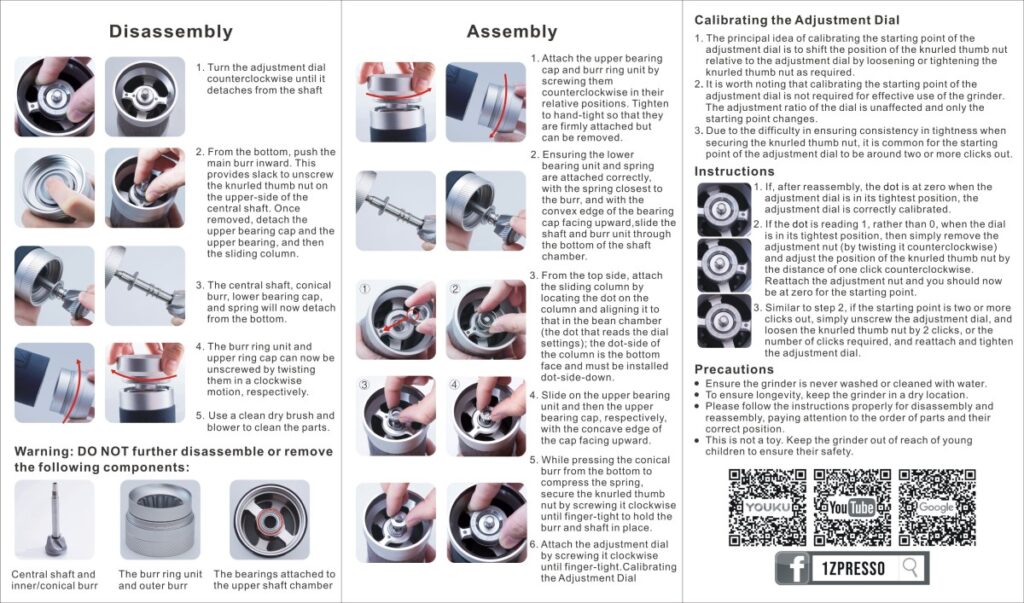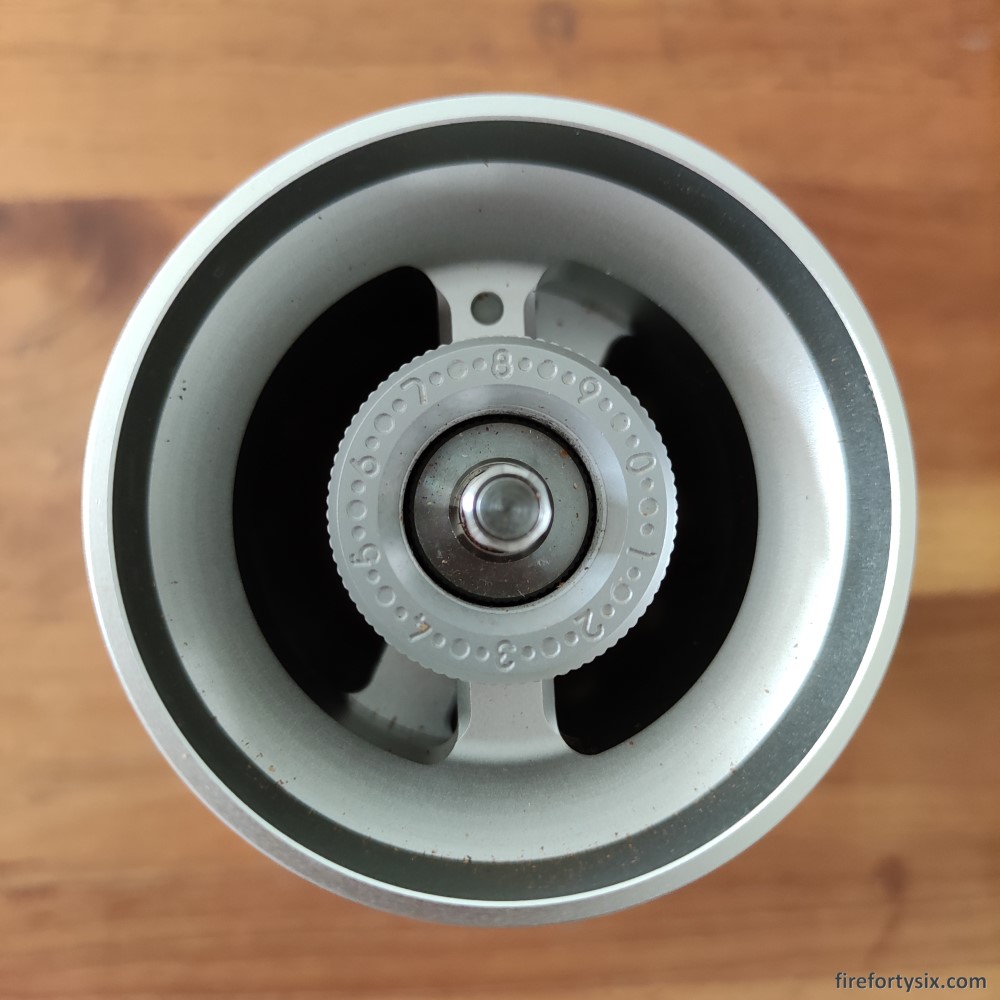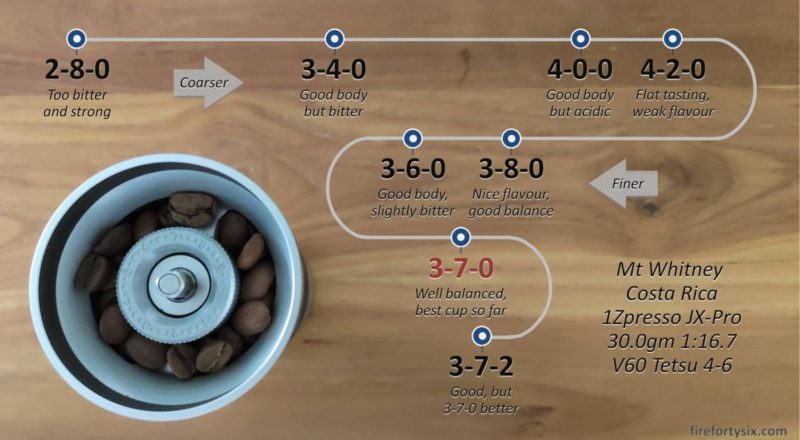So, after mulling it over a couple of days, I finally pulled the trigger and ordered the 1Zpresso JX-Pro from the 1Zpresso official online store. The order was made on Friday morning, confirmed on the following Monday afternoon and shipped out the very same evening.
Fedex tracking sent me tracking update emails every step of the way, and it was interesting to see the route that the grinder took to reach me. The regular emails also helped to increase my anticipation as I saw it steadily make its way to Singapore on the Fedex tracking website, listed below in reverse chronological order.




It was delivered to my door on Wednesday afternoon, four working days after I placed my order, making stops at the Philippines and China along the way. Guangzhou must be a major logistics hub for online orders, which is not surprising given the sheer amount China-produced stuff that is sold online and exported internationally.
I found it interesting that the package had to essentially make a detour to the Philippines before heading to China. It was similar to what my Taiwanese friends went through, not that long ago, whenever they had to fly to Beijing for work. They would have to transit via Hong Kong, more than doubling their travel time when compared to taking a direct flight.


Inside the brown cardboard box that arrived was the actual box that housed the grinder. Even though it’s less environmentally-friendly, double-boxing is quite common for online deliveries and I can understand why, given the dented condition of the outer box.
The grinder itself was satisfyingly heavy and was very sturdy as I held it in my hands. My timer scale said that it weighed 799.8 grams and it definitely felt like it did. The brushed metal outer body was beautiful and the rubber grip was very grippy. I attached the grind handle and there was practically no resistance as I made a few bean-less test revolutions.
They say that first impressions are the most important, and the 1Zpresso JX-Pro definitely aced it.



I was expecting the box to contain the user manual but it just had a small card with their Email, Facebook and Instagram accounts, as well as the link: 1zpresso.coffee/manual. It was minimal but effective. The site contained JPG downloads of user manuals and grind settings reference for various models in English, Traditional Chinese, Simplified Chinese and Korean.
It was surprising not to see translated versions in Japanese and the European languages, but I suppose it’s an indication of their current market. Given their good cost-performance ratio, I wouldn’t be surprised if they start picking up more market share globally. Especially against expensive grinders like the German-made Comandante which easily cost more than twice the price, that is, if you can even find any in stock.


The grind setting reference provided the typical ranges for different brewing methods, but since I was only doing v60 pour over coffee, I zoomed in on the blue section. Each full rotation of the dial has 40 steps, or clicks, and there are four clicks between each 0-9 number marking.
For pour overs, the recommended range is between 3-2-0 to 4-4-0. The first digit is the number of full revolutions, the second digit is the number marking on the dial and the third digit is the number of clicks from the number marking.


I opened a new bag of Mt Whitney Costa Rica Estate Tarrazu, my current favourite among all their single-origin beans, and started on an iterative search for the best setting, a process commonly known as “dialing in the grind”.

My first attempt was 2-8-0 and it turned out to be too bitter. I increased the grind to make it coarser and tried 3-4-0. It tasted better but was still quite bitter and I had to grind it even coarser.
I chose an equidistant increment and set it to 4-0-0 but clearly went too far, as the coffee tasted quite acidic. Just for the fun of it, and to see how bad it could taste, I made a cup using 4-2-0 and it was flat and weak tasting, a clear sign that it was under-extracted. Time to make a U-turn and start grinding finer.
I tried 3-8-0 next and it was a good cup with nice flavour and good balance. I rated it an 8 but The Wife gave it a 7. Still not quite there yet. Grinding finer at 3-6-0 resulted in us flipping our respective scores.
I split the difference and that did the trick. The cup at 3-7-0 got an 8 from both of us and was the best cup of coffee that we’d had since I started going down the rabbit hole. I also tried 3-7-2 and while it was also good, it wasn’t quite as good.

So, my starting point when dialing in future beans will be 3-7-0 on the 1Zpresso JX-Pro.
In case you’re wondering, no, we didn’t do all this on the same day. I do my pour overs once a day and the whole process took about a week. It would have been more consistent to compare everything in one sitting (like how we did our yuzu sake ranking), but drinking 2 litres of coffee each, first thing in the morning, would be living life too dangerously.
I did take photos though, as a visual check across the different settings to see what our ideal grind size looks like.



One small disappointment I had at the conclusion of the process was that we didn’t get a cup with a score higher than 8. I was hopeful that with a much better grinder, I would be able to achieve a quantum leap, but that sadly didn’t happen.
We did manage to obtain our best tasting cup ever, so that’s definitely a milestone, but I still need to go deeper down the rabbit hole. The next important variable is water temperature and I’ve already placed an order for the Timemore Smart Fish gooseneck temperature control kettle, which is on its way from China.
Also, I think it’s also the right time to upgrade our beans and try using freshly-roasted ones from local roasters like Tiong Hoe, PPP and Nylon. They’ll be more expensive than my usual Mt Whitney, but I’m optimistic that they will produce cups with ratings of 9, or maybe even 10.
To be continued.

I have my doubts about this review.
Alvin Lee says this grinder is made of stainless steel?
Tried analyzing it two times it comes back as aluminum.
Since you mentioned it, I went back to 1Zpresso website to double-check and it lists the JX-Pro materials as: wood, polycarbonate, silicone, stainless steel and aluminum alloy. Given that the burrs are stainless steel, the outer metal body could be aluminum alloy. Thanks for pointing it out and I’ve updated the post to just mention metal.
I am like you. I got the JX-Pro and was doing French Press so I zoomed right in on that setting. I used freshly roasted coffee using the honey method of removing the skin and fermenting the fruit. But I read to begin in the mid-point for starters. It was dead on perfect. I needed to play with water ratios instead of following the crowd and the result was beautiful. The aroma enters the nose with each sip. An experience I never had before. And now I’m on to espresso as my Flair Pro 2 just arrived.